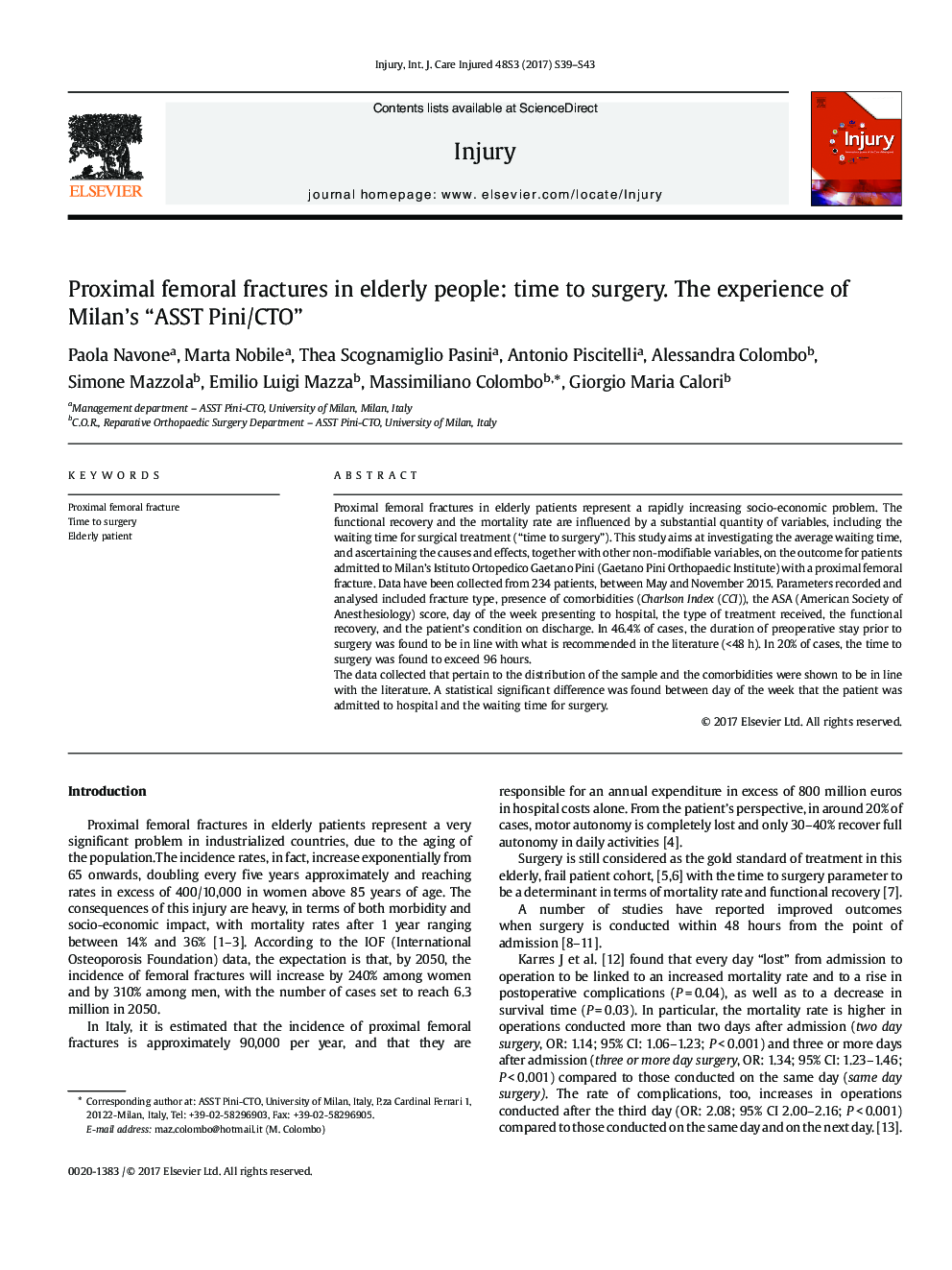| Article ID | Journal | Published Year | Pages | File Type |
|---|---|---|---|---|
| 5652552 | Injury | 2017 | 5 Pages |
Proximal femoral fractures in elderly patients represent a rapidly increasing socio-economic problem. The functional recovery and the mortality rate are influenced by a substantial quantity of variables, including the waiting time for surgical treatment (“time to surgery”). This study aims at investigating the average waiting time, and ascertaining the causes and effects, together with other non-modifiable variables, on the outcome for patients admitted to Milan's Istituto Ortopedico Gaetano Pini (Gaetano Pini Orthopaedic Institute) with a proximal femoral fracture. Data have been collected from 234 patients, between May and November 2015. Parameters recorded and analysed included fracture type, presence of comorbidities (Charlson Index (CCI)), the ASA (American Society of Anesthesiology) score, day of the week presenting to hospital, the type of treatment received, the functional recovery, and the patient's condition on discharge. In 46.4% of cases, the duration of preoperative stay prior to surgery was found to be in line with what is recommended in the literature (<48 h). In 20% of cases, the time to surgery was found to exceed 96 hours.The data collected that pertain to the distribution of the sample and the comorbidities were shown to be in line with the literature. A statistical significant difference was found between day of the week that the patient was admitted to hospital and the waiting time for surgery.
